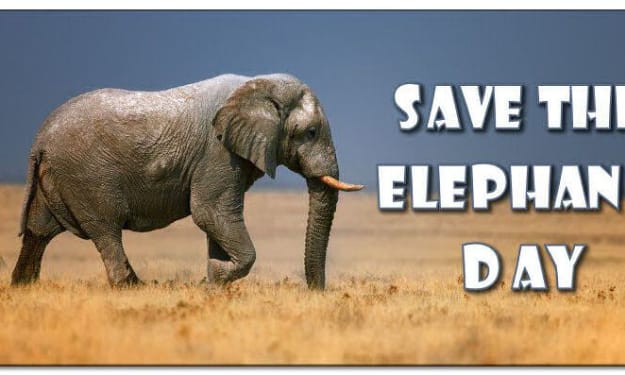The Sweet Spot Between a Presentation and a Text Document
In the age of virtual meetings, Slidedocs may be a better answer.

I had a problem. There are two business units in our city that share the responsibility for seizing and towing vehicles. I know, you’re already falling asleep at your desk and there’s a little pool of drool by your mouse pad. But hang in there with me.
The record management and operating systems didn’t talk to each other. Staff in both business units needed to be brought up to speed on our new process, the other unit’s process and how they would work together.
The information and process flow were complicated for non-subject matter experts. The reeking dumpster fire of 2020 has made business communication a lot more challenging. A text document would be dense and confusing. The COVID pandemic, time demands and the general suckage of using PowerPoint to communicate complicated processes made a meeting, virtual or physical, not a great medium either.
So how do I communicate this process to my managers? What’s the medium between a formal PowerPoint presentation and a business text document that can do a better job?
THE BRAIN-PICTURES AND STORIES

When most people advocate for an idea we think of a compelling argument, a fact or a figure, but research shows that our brains are not hard-wired to understand logic or retain facts for very long. Our brains are wired to understand and retain stories. Jennifer Aaker-Stanford.
People create visual images to accompany their inner speech even when they are prompted to use verbal thinking, suggesting that visual thinking is deeply ingrained in the human brain while speech is a relatively recent evolutionary development. Elinor Amit.
We think in pictures and stories. Research from cognitive psychologist Jerome Bruner indicates that when we wrap a story around facts and data people are 22 times more likely to retain information.
Impactful communication, communication that sticks, communication that leads people to take action has to appeal to people’s emotions. And that means a presentation format that emphasizes visuals and stories.
WHAT’S A SIDEDOC?

Nancy Duarte, the genius behind Al Gore’s An Inconvenient Truth Ted Talk, created the Slidedoc.
A visual document, developed in presentation software, that is intended to be read and referenced instead of projected. Nancy Duarte.
How does this compare to the current formats we use for business communication?
Document
These can be dense and complex but they’re necessary. Think user’s manuals, legal briefs, policy or training guides. A text document is intended to be an exhaustive and informative documentation of the topic. Often the text-only nature makes it hard to grasp complicated ideas and processes.
Presentation
In the best case, presentations use powerful and persuasive language, compelling images and minimal but impactful text on each slide. But, they’re time-consuming by the very nature of having everyone in the same room, or virtual room, at the same time. The interactive nature of presentations further contributes to the time these take. Many people, many questions, many opinions.

Slidedoc
This is the sweet spot between the two. It’s the perfect balance of detail that’s still scannable. It speaks to the brain’s proclivity to retain facts better when they are built around visuals and stories.
WHAT MAKES A SLIDEDOC EFFECTIVE?
When you research any training on how to make writing, movies, or marketing more impactful they all have one piece of advice in common: Think about your audience first.
Limited Space on a Slide
Each slide relates to only one concept. The author must communicate one small chunk of the whole process on a limited canvas. The writing and visuals provide maximum brevity and impact.

Visual Concepts
Pictures and charts allow the ideas to be presented in a format that plays to the brain’s proclivity to process information in a visual format. Ideas are grasped easier.
Saves Time
The pictures and minimal text of Slidedocs allow the information to be consumed and understood faster. It’s more respectful of your audience’s time demands. The message is digested on the audience’s time, not the presenters.
It’s Portable
Slidedocs can be consumed in numerous formats. Laptops, tablets, phones and print. The digital aspect of a Slidedoc allows for hyperlinks and video to be placed on a slide.
WHEN TO USE A SLIDEDOC
Pre-meeting Preparation
This allows everyone to be up to speed on the information before the meeting so the actual meeting can be used to build consensus and make decisions.
This was our original intention of trying a Slidedoc. But the board room presentation wasn’t required. We’ve created three different slide docs for three different research topics. Once the managers reviewed the work, they signed off on all the recommendations. Bonus.
To Replace a Meeting
You don’t have to be there to explain your idea.
In the past, our Audit and Oversight team presented all our research and recommendations. Think board room, PowerPoint and stressed managers who silently (or not so silently) resent the time suck. Now the information can be digested at the manager’s convenience.
Reference Material
When the meeting is still required the Slidedoc supports the discussion. Easy to comprehend cheat notes that are accessible to everyone in the room.
Training and Accountability Aid
The modular, simplified nature of a Slidedoc allows it to be used as training material. It also provides a level of accountability. It acts as a supportive document to explain why decisions were made and processes were implemented.
We were able to provide our Slidedocs to staff and other stakeholders once the new processes were implemented. This proactively addressed any questions and alleviated any confusion.
We live in a world where there’s a tsunami of information. Your message needs to have an impact to stand out. Craft your research and data using stories and visuals.
Slidedoc worked for us. Here’s a link to the free Slidedoc book.
I am not affiliated with the Duarte company and received no compensation. But I’ll take it. Yo, Nancy. You there? Hello…
About the Creator
Steve Gillett
Dad, husband, first responder, personal trainer, nutrition coach, resilience coach, animal lover. Professional horizontalist. Will tolerate select humans individually or in small groups.






Comments
There are no comments for this story
Be the first to respond and start the conversation.